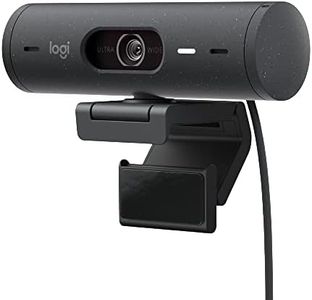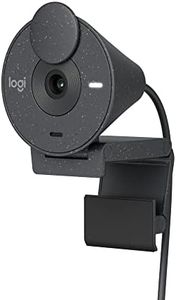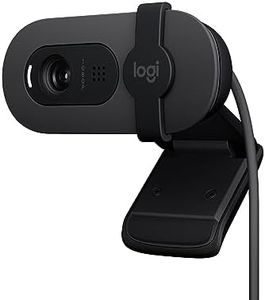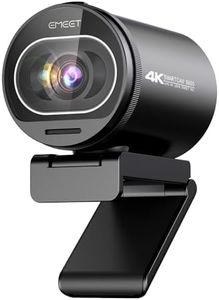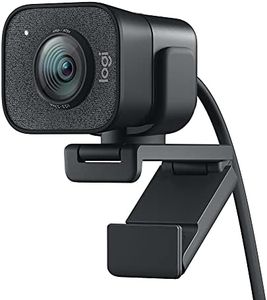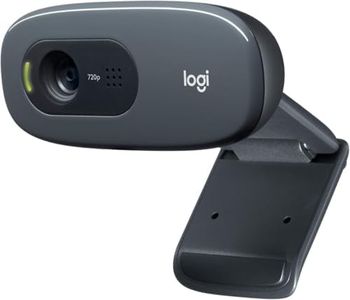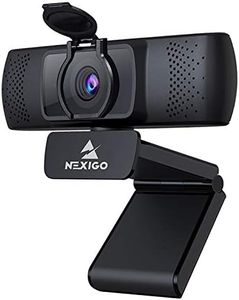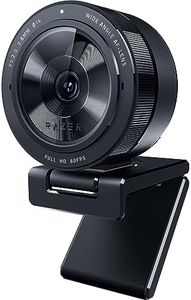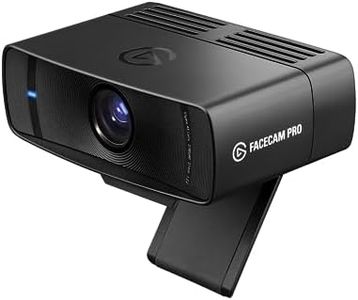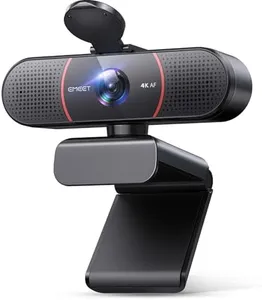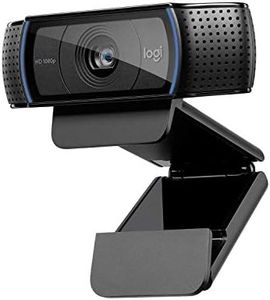We Use CookiesWe use cookies to enhance the security, performance,
functionality and for analytical and promotional activities. By continuing to browse this site you
are agreeing to our privacy policy
10 Best Webcams
From leading brands and best sellers available on the web.Buying Guide for the Best Webcams
Choosing the right webcam involves understanding what you need it for—whether that's video calls, streaming, online classes, or recording videos. A good webcam can make a big difference in how you appear and sound to others, but what’s 'best' depends on your priorities like visual clarity, sound quality, lighting conditions, and whether you plan to use extra features. By knowing which specs matter most for your situation, you’ll be able to select a webcam that fits your needs and makes your experience much smoother.ResolutionResolution refers to the number of pixels the webcam can capture, usually measured in 720p (HD), 1080p (Full HD), or 4K (Ultra HD). This spec is important because it directly affects how clear and sharp your image looks to others. 720p is often enough for simple video calls, as it balances quality and bandwidth. 1080p gives a crisper, more professional look which is great for streaming, meetings, or if you want your image to stand out. 4K is mostly for those needing the highest detail—perhaps content creators or streamers. Your choice should depend on how important image clarity is for your activities and whether the people you talk with or platforms you use support higher resolutions.
Frame RateFrame rate—measured in frames per second (fps)—tells you how smoothly the video appears. Most webcams offer either 30fps or 60fps. At 30fps, motion looks natural for everyday use, like calls or meetings. 60fps gives much smoother motion, which is great for live streaming, gaming, or any scenario with fast movement. If you want a natural, professional appearance, aim for at least 30fps, but if smoothness is a big concern (like for streaming), 60fps is a better choice.
Field of View (FOV)Field of view describes how much the camera can see, measured in degrees. A narrow FOV (around 60-70°) captures just you, filling the screen and reducing background distractions—good for focused conversations. Wider FOVs (up to 120°) capture more of your room, which is helpful if you want to show multiple people or more space during your calls or streams. Think about whether you'll always be alone on camera or need to share the view with others, and choose accordingly.
Autofocus and Low-Light PerformanceAutofocus lets the webcam keep you sharp and in focus even if you move around, while low-light performance determines how well you appear when the lighting isn’t perfect. Some webcams have fixed focus, which is fine if you always stay at the same distance, but autofocus is better if you might shift position. Good low-light performance (sometimes promoted as 'HDR' or 'light correction') makes you look clearer and more natural, especially in dim rooms. Consider where you’ll mostly use your webcam, and choose these features based on how much you’ll move or how bright your environment is.
Microphone QualityMost webcams come with built-in microphones, saving you from using a separate mic. The quality can range from basic mono to stereo with noise-canceling features. Simple built-in mics are adequate for casual calls, but if you want clear audio—especially in noisy environments—look for dual microphones or noise reduction. If sound quality is critical, you may eventually prefer a dedicated external microphone, but for most users, a webcam with good built-in audio should be enough.
Mounting and FlexibilityThis covers how the webcam attaches to your computer or supports other positions. Some webcams clip onto monitors or laptops, while others include tripods or offer swivel and tilt adjustments. If you always use your webcam at your desk, a simple clip-on model is fine. If you need to move it around, record from different angles, or use it with multiple devices, look for flexible mounting features. Think about where and how you’ll use the webcam, and pick one that is easy to set up in your preferred spot.
Compatibility and ConnectivityMost webcams connect via USB, but some need special drivers or only support certain operating systems. Make sure the webcam is compatible with your computer and the apps you want to use, like videoconferencing or streaming software. Plug-and-play webcams are simple and work right out of the box, while other models may require some setup. Consider your computer’s ports and your confidence with setup when making your choice.

